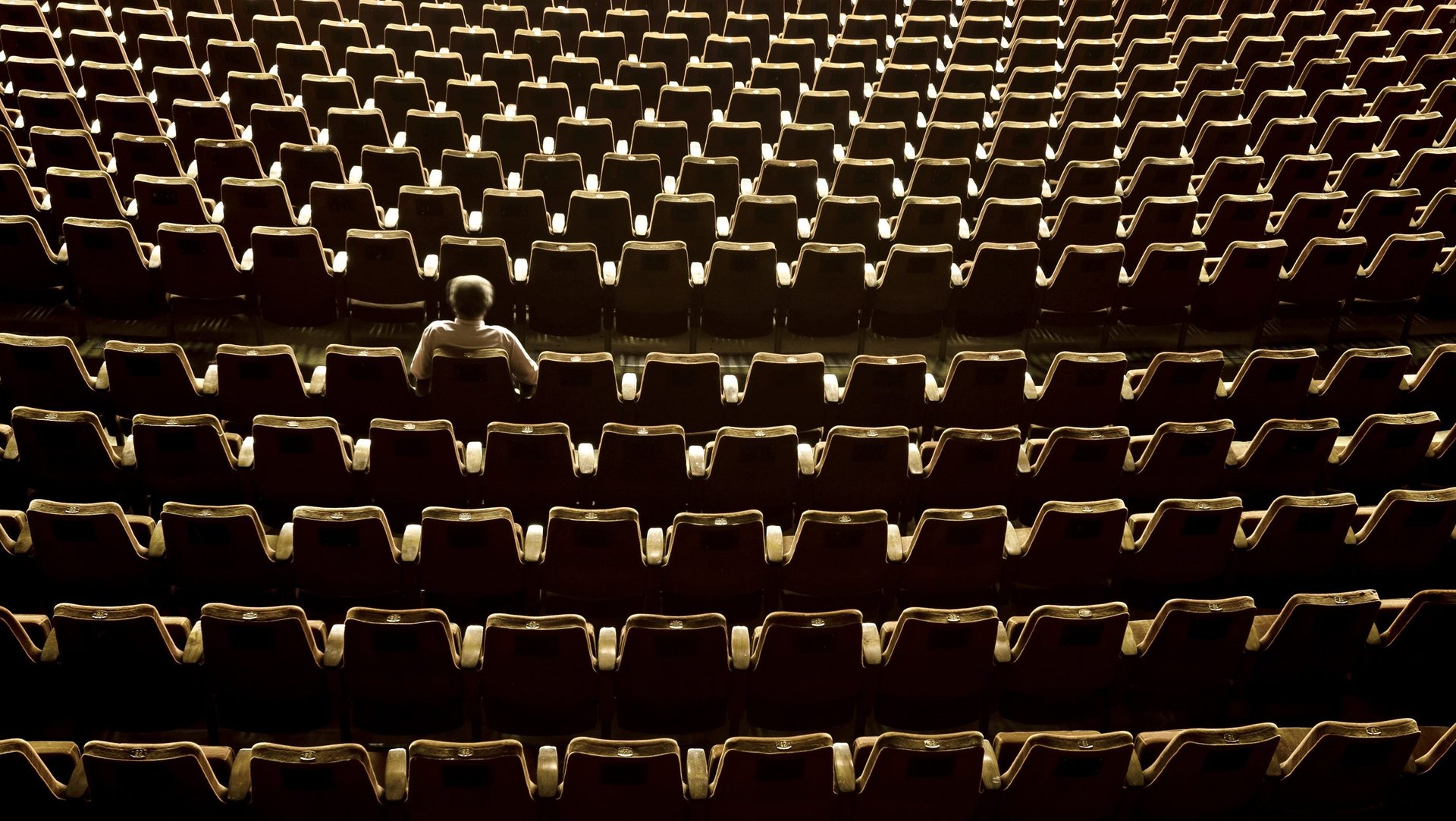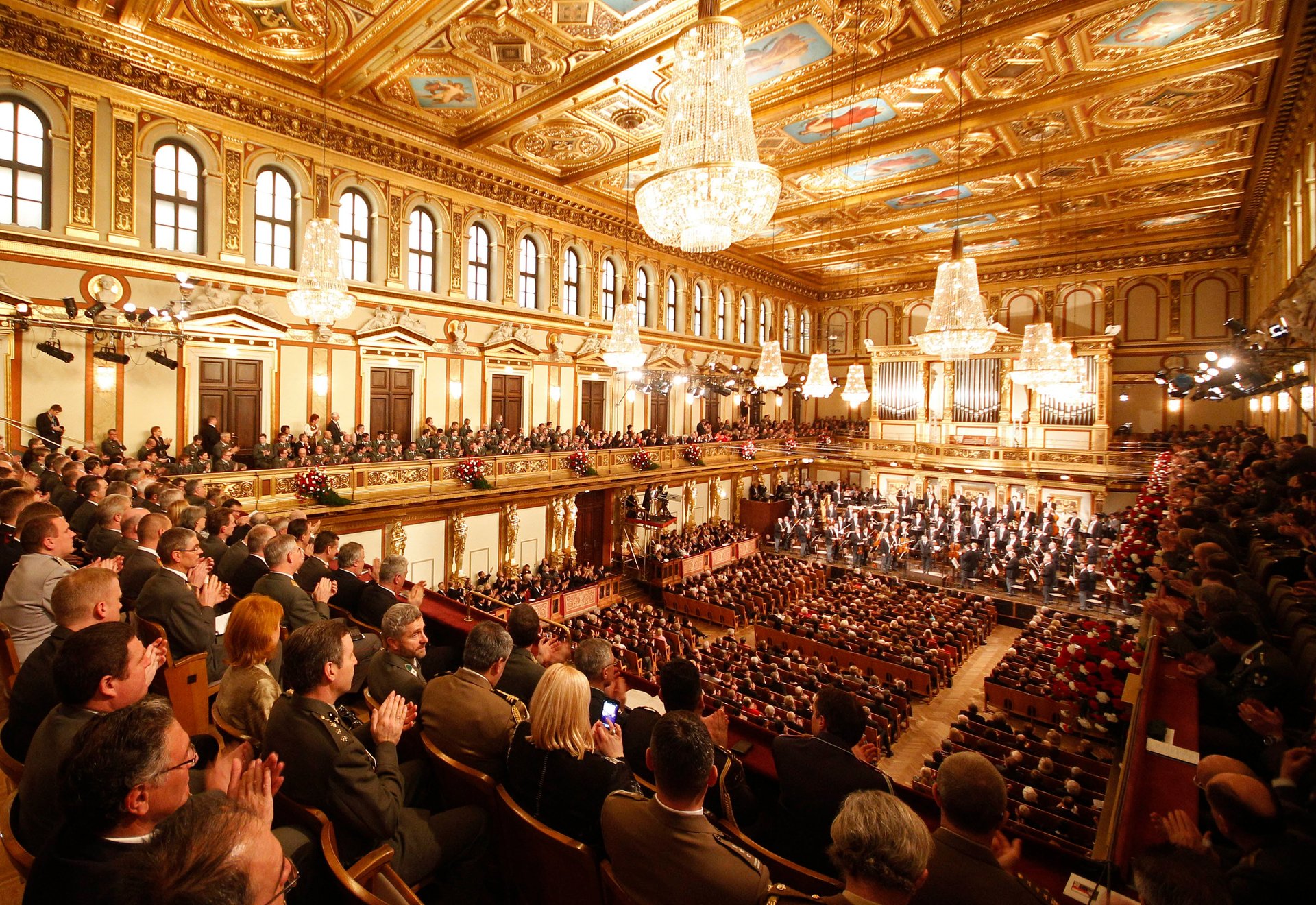The classical music concert is a vital workout for our sagging, flabby attention spans
In the age of hyper-connectivity and multi-tasking, staying focused during a two- or three hour classical music performance can feel like a workout.


In the age of hyper-connectivity and multi-tasking, staying focused during a two- or three hour classical music performance can feel like a workout.
At a Kennedy Center concert in Washington, DC last week, I sat next to a woman who popped some gummy vitamins as Russian virtuoso Daniil Trifonov played a blistering passage from Stravinsky’s Russian Dance. As the celebrated pianist tackled a rousing Shostakovich fugue a few minutes later, she again reached under her seat, this time pulling out some hand lotion for her already well-moisturized hands. “Want some?,” she muttered to her companion, tossing the tube of honeysuckle-scented cream on his lap.
At the New York Philharmonic last month, an elderly woman in the front row flipped through a long New Yorker feature, as Yo-Yo Ma shredded his cello just a few feet away. A few rows back, a businessman caught up on sleep.

Performers can hardly be blamed for not winning their audience’s attention. Without elaborate sets and dance numbers to entertain our eyes and no twisted plot lines to follow, watching a live orchestra can feel like a marathon of slow-burn, abstract art.
The New York Times chief classical music critic Anthony Tommasini has observed that the rigor of classical concerts prevents more people from going to the symphony. ”That live classical music requires concertgoers to listen and focus, often for lengthy stretches, has long seemed off-putting to many potential aficionados,” he writes in a 2015 essay. (paywall) But even for newcomers who can’t tell the difference between Bach and Beethoven, there’s an argument for going to the symphony: A regimen of classical concert-going might be able to allay today’s sagging attention spans and flabby focus muscles.
Like going to the gym, sometimes getting ready to see a show can be a slog, especially on busy weeks. It’s tempting to think, “Should I spend these three hours finishing work instead?” “Can I stand to be without my phone for such a long stretch?” Sitting for 90 minutes for Mahler’s Third Symphony—considered the longest piece in classical repertoire—once made me sweat, aching to check my phone.
I’m not talking about ambient classical music, which itself has been proven to have many benefits from reducing stress, helping students remain focused during lectures, and to improving visual attention for stroke victims. I’m suggesting a routine of actually showing up at live performances, as an exercise in focused listening and thought monogamy.
Gil, my classical music-loving godfather introduced me to the symphony. The very first live performance we saw together was Bach’s uplifting Brandenburg Concertos at New York’s Lincoln Center. At intermission, I asked him where to fix my gaze and what I should be thinking of. He smiled and suggested to look towards the baroque harpsichord brought in specially for the performance and just “feel the music.” While I really enjoyed Bach’s lively 1721 composition, I longed for the formal concert to end.
But a breakthrough came with the work of Russian composer Modest Mussorgsky. Knowing that I love visual art, Gil took me to a performance of Mussorgsky’s Pictures at an Exhibition. As we settled into our seats at Carnegie Hall, he suggested I visualize the 10 paintings suggested by the notes in each movement. Through the length of the piece, my mind was focused on picturing a squat, lurching gnome on the first movement, a sunny stroll through the Tuileries Garden on the third movement and my favorite, the comedic chaos of the Ballet of Unhatched Chicks on the fifth. Since then, I realized that even if I knew nothing about a piece, I could make sense of the implied narrative of classical scores—taking clues from shifts and cadences—if I gave it my full attention. New classical music pieces are endurance training for focus.
Before Mussorgsky, the pressure to keep up with a job, grad school and constant pings from my mobile phone had eroded my ability to listen and focus so intently. Like the rest of the so-called multitasking generation (a.k.a. GenM), my default mode is to start two or more things at the same time, and that approach had compromised my ability to finish novels, TV shows, and projects efficiently. It also made me impatient, divided my affections and diluted my resolutions.
But those hours of blissful, uninterrupted focus at the symphony inspired a new regimen. For the past three years, I’ve subscribed to a local orchestra and committed to see a performance at least once a month.
Except for the smattering of venues that offer millennial-friendly #TweetSeats, the concert hall is among the last places where mobile devices can’t save us, and as Tommasini argues, that’s a good thing. “[The] opportunity awaits to promote classical music as a haven for device-free absorption in live musical performances.” he argued. “Here is a chance to turn off your mobile phones, detach from the Internet and let your texts accumulate, so that you can cede control of a sensory experience to composers and performers.”
Neuroscientists too approve of regular stints at the symphony. A 2007 Stanford University study suggests that listening to the four movements in a typical classical music concert trains the brain to partition large bodies of information into meaningful chunks. “In a concert setting, for example, different individuals listen to a piece of music with wandering attention, but at the transition point between movements, their attention is arrested,” explained Vinod Menon, professor of psychiatry and behavioral sciences.
Over time, I noticed that showing up at concert halls with some regularity has given me back the capacity for single-mindedness, or monotasking, as productivity experts call it. I also fidget less, and proud of my prowess for sitzfleisch, in concerts, long haul flights and oppressively long business meetings. There are several known tactics for rebuilding attention span, from playing video games to meditation. But the concert hall, where things can’t be paused and one can’t get up to leave easily, is the ultimate training ground.
At the symphony, the only task is to tune in to one beautiful spectacle at a time.